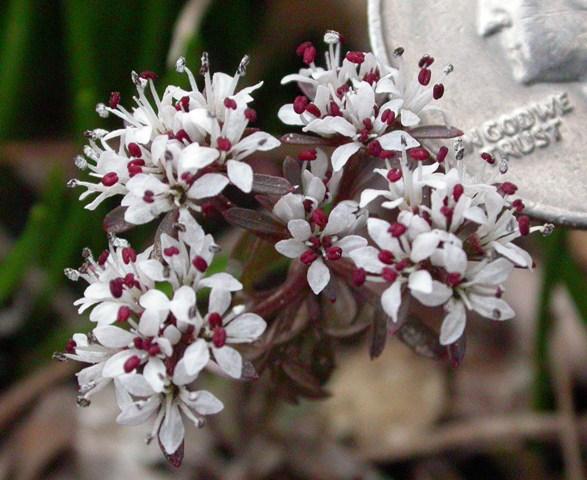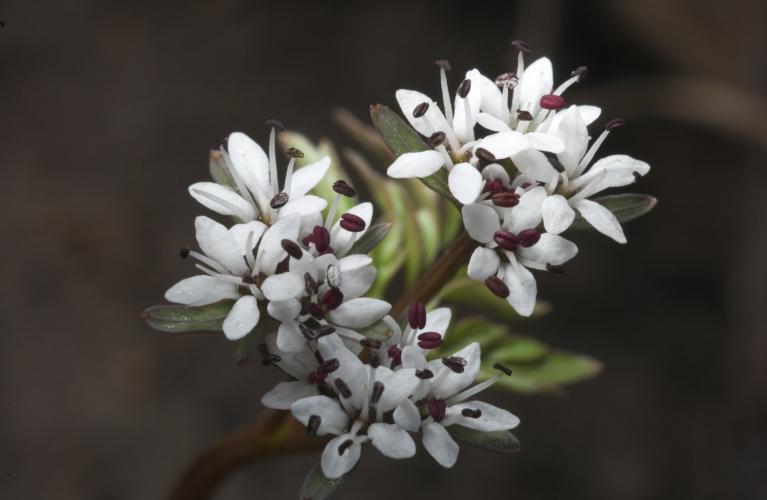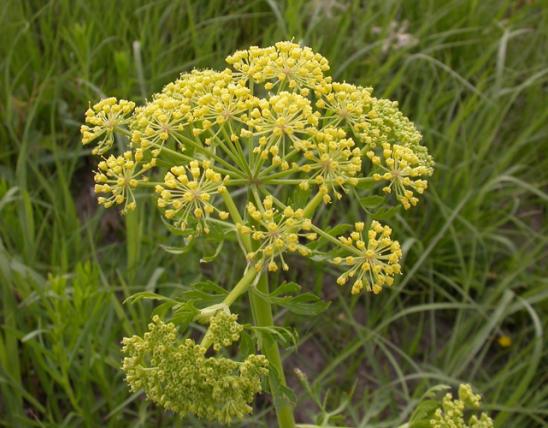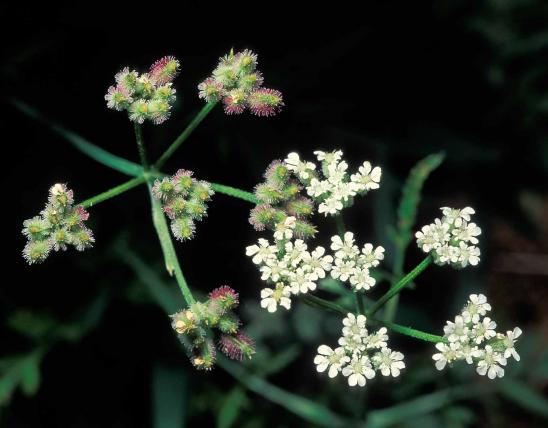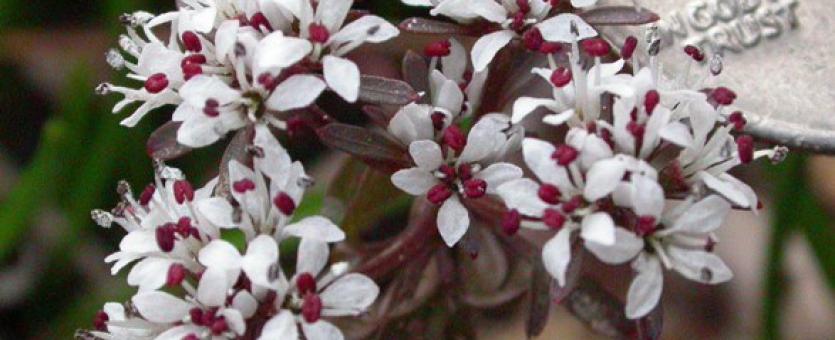
Harbinger of spring is a small, early-blooming member of the parsley or carrot family, with flower clusters appearing before the foliage. The flowers are tiny, arranged in very small, simple umbels (a type of rounded cluster, shaped like an umbrella). The dark reddish-brown anthers show prominently. This flower is sometimes called "pepper and salt" for the combination of tiny, white petals and dark, rounded anthers. Blooms January–April; this species opens the spring flowering season. Leaves are divided and fernlike, sometimes reddish, usually appearing after flowering begins. The root is a small, rounded tuber.
Height: starts flowering at 2–3 inches, later attaining a height of 8 inches.
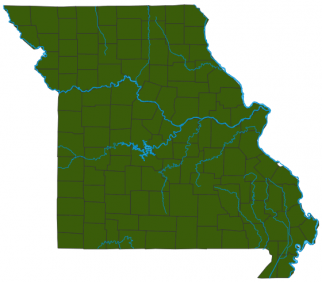
Statewide; most common in the eastern and southern halves of the state.
Habitat and Conservation
Grows in bottomland forests and moist upland forests, mostly in ravines and valleys, protected areas at the bases of wooded slopes, and along streams and rivers.
Heralding a new growing season, harbinger of spring can bloom as early as January in Missouri. You will probably have to look closely for its small clusters. It is often overlooked because of its early blooming time and overall small size.
Status
Native Missouri wildflower.
Human Connections
The small, deeply buried tubers are said to be edible, but most people treasure harbinger of spring as a tiny, but significantly heartwarming, sign that winter is coming to an end.
The genus name, Erigenia, is Greek for "early-born," and it is the name given by Homer to Eos, the goddess of the dawn. The species name, bulbosa, is Latin for "bulbous," in reference to the tuberous roots. The English word harbinger isn't used much anymore in day-to-day speech; it means "precursor" or "forerunner."
Ecosystem Connections
Like other early-spring woodland wildflowers, this species accomplishes its mission before the trees leaf out overhead and block the sunlight. A wide variety of bees and flies visit the flowers.
This plant is a member of a large and important family. Relatives include Queen Anne's lace, water hemlock, carrot, parsnip, parsley, cilantro/coriander, celery, dill, fennel, cumin, anise, and many more. All have flowers arranged in umbels (like little upside-down umbrellas), and the seeds are structurally similar.
